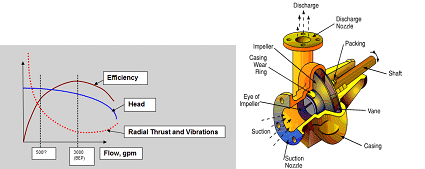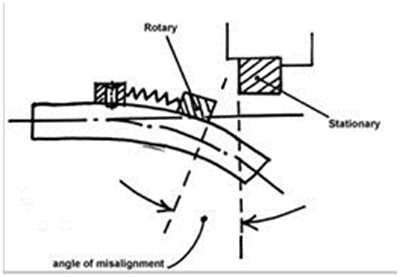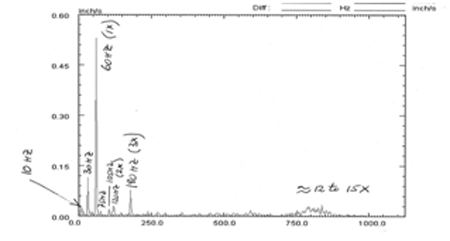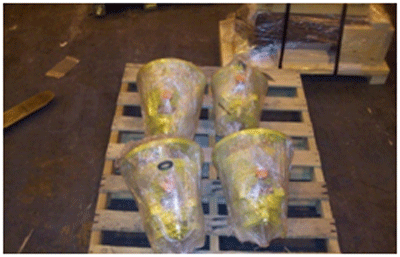While scheduled downtime is different from unscheduled, both can take away from a company. An effective reliability program, however, will minimize unplanned downtime and maximize scheduled downtime.
Scheduled downtime reflects the need to periodically adjust for machinery's normal wear and tear. These planned outages are coordinated by maintenance, engineering and operating groups to repair or replace the equipment for a particular unit within the plant, or even for the entire plant. While unfortunately expensive, planned downtime is expected and required. Materials can be prepared in advance, with procurement cost minimized and deliveries scheduled for stock in advance (1).
Unplanned downtimes, however, are more disruptive occurrences and (by Murphy's Law) usually happen at the least desirable times. Such occurrences usually constitute emergencies, allowing little time for planning. Materials and spare parts are delivered at higher costs, and revenues lost from stopped production could total in the millions.
A statistical approach with the use of periodic surveys (2) is a good starting point to address the issue of unplanned downtime proactively. Equipment is grouped into a prioritized list, with notes on statistical frequency of failures, repair costs, criticality to operation, presence or absence of spares and other factors. A plant team, including operations, maintenance, engineering and purchasing personnel, often performs the survey. Management buy-in and support of the team is essential for success. Vendors can also provide input and recommendations to the team.
Pumps and motors are the primary consumers of energy and provide the biggest opportunities for cost savings through the implementation of an equipment reliability program (3). Pumps can range from small (but many), to large (but few).
When tabulating the criticality of factors affecting reliability (and thus the uptime) of pumps, considerations should be given to:
- Frequency of failures (times per year or other controlled interval)
- Repair costs during the control interval
- Vibration: overall value, with possible follow-up spectral analysis of the dominant harmonics
- Availability and cost of parts
- Response and dependability of the supplier support
- Materials of construction
- Operating point (percent of the BEP) on the performance curve
Each item needs to be reviewed by the team on technical, logistical and financial merits. As an example, we will consider the case of operating point and what effect it has on operation and on downtime. When a pump operates off BEP, radial loads become excessive, exponentially increasing from BEP to shutoff (see Figure 1).

Figure 1. Effect of off-BEP operation on the radial load
High vibration instabilities typically accompany off-BEP operation. As a result, seals (4) and bearings suffer. If the operation is left uncorrected, other components become damaged: broken shafts, cavitated impellers and worn casings (see Figure 2).

Figure 2. Cavitation damage to the impellers and casing
Seal damage is often the first symptom of operation off-BEP, due to tremendous deflection of the shaft under load (see Figure 3).

Figure 3. Shaft deflection under excessive load (courtesy of A.W. Chesterton)
Once frequency of failures is related to one of the parameters (off-BEP operation, for example), a vibration spectral analysis should be conducted on pumps on the top 10 list of worst offenders (see Figure 4).

Figure 4. Vibration spectral analysis conducted for the top 10 worst actors
A similar study is conducted for the remaining items, and the summary is tabulated.

Figure 5. The manner of storage, packaging and documentation are also important considerations in the overall approach to minimized downtime
At that point, the team is ready to propose, review and implement the solution, starting from the top of the matrix and systematically progressing down the list. Corrective actions are documented, and measurements are conducted after the implementation. The quantifiable variables should include reduced vibration levels, reduced power draw, improved flow operation, measured reduction in frequency of failures and similar parameters.
Once quantifiable improvements are obtained, the program can be expanded to other units within the plant. For a reliability-conscientious team, measurements of the improved MTBF may then be compared to those from other plants to compare notes and learn from each other.
The bottom line will invariably be substantial savings, due to a sound approach to solving reliability issues and reducing downtime.
References
[1] "Cut Maintenance Cost and Maximize Reliability," Amemco Publication.
[2] L. Nelik, "Pump Reliability and Energy Surveys," Pumps & Systems, December 2009, page 15-16.
[3] "Reliability Improvements and Energy Savings via SCOPE Implementation," 2008, PML.
[4] William Alan Evans, Sealing Systems for Water Pumps, A.W. Chesterton Company.
Pumps and Systems, April 2010

